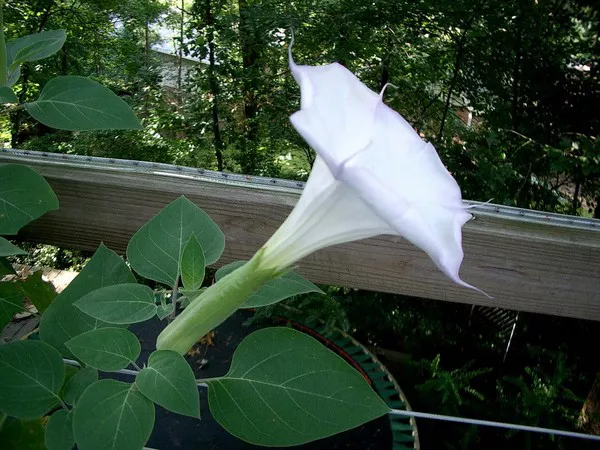Asiatic lilies are renowned for their stunning blooms, adding a touch of elegance to gardens and landscapes. However, once these vibrant flowers have completed their bloom cycle, gardeners are faced with the question of what to do next. Proper post-blooming care is crucial for the health of the plant and ensures a bountiful display in the following seasons.
Understanding the Blooming Cycle
Before delving into post-blooming care, it’s essential to understand the blooming cycle of Asiatic lilies. These perennial plants typically bloom in late spring to early summer, producing an array of vibrant and captivating flowers. The blooming period varies depending on the specific variety of Asiatic lilies planted. Once the flowers have completed their display, the plant transitions to the next phase, focusing on energy storage and preparation for the following growing season.
Deadheading for Continued Beauty
Deadheading, the process of removing spent flowers, is a fundamental practice for promoting the continued beauty of Asiatic lilies. This not only enhances the aesthetic appeal of the garden but also redirects the plant’s energy towards strengthening itself. Use sharp, clean scissors or pruning shears to snip off the faded flowers just below the base of the bloom. Regular deadheading encourages the development of additional buds and prolongs the blooming season.
Pruning and Cutting Back
Asiatic lilies benefit from pruning and cutting back after the flowers have finished blooming. Trim the stems back to about one-third of their original height, leaving sufficient foliage to allow the plant to photosynthesize and store energy. Be mindful of any damaged or yellowing leaves, as removing them contributes to the overall health of the plant. This practice not only tidies up the garden but also ensures that the plant directs its energy toward root development.
Fertilizing for Future Blooms
To support the growth of robust blooms in subsequent seasons, fertilizing Asiatic lilies after flowering is crucial. Use a balanced, water-soluble fertilizer or a slow-release granular fertilizer with a formulation like 10-10-10. Apply the fertilizer according to the package instructions, making sure not to over-fertilize, as this can lead to adverse effects. The post-blooming period is when Asiatic lilies actively store nutrients, and a well-timed application of fertilizer contributes to healthier plants and more abundant flowers in the future.
Mulching for Moisture and Temperature Control
Mulching around the base of Asiatic lilies serves multiple purposes, especially after the flowers have completed their bloom. A layer of organic mulch, such as shredded bark or compost, helps retain soil moisture, suppresses weeds, and regulates soil temperature. Consistent moisture is particularly important for Asiatic lilies during their post-blooming phase as it supports the plant’s recovery and prepares it for the dormancy period.
Division for Plant Health and Increased Flowering
Every few years, Asiatic lilies benefit from division to maintain plant health and vigor. Late summer or early fall, after the flowers have faded, is an ideal time for division. Carefully dig up the lily bulbs, separate them into individual sections, ensuring each division has roots attached, and replant them in well-prepared soil. This not only rejuvenates the plant but also encourages increased flowering by providing each division with ample space and nutrients.
Watering Practices for Optimal Growth
Proper watering is essential for the well-being of Asiatic lilies, especially after their flowers have completed their display. Ensure a consistent watering schedule, keeping the soil consistently moist but not waterlogged. Adequate hydration supports the plant’s recovery and contributes to healthy root development. Be mindful of environmental factors such as temperature and rainfall, adjusting your watering practices accordingly.
Pest and Disease Management
After the flowers have faded, it’s crucial to remain vigilant against pests and diseases that may affect Asiatic lilies. Inspect the plants regularly for signs of common issues such as aphids, mites, or fungal infections. If detected, take prompt action using appropriate measures such as insecticidal soap or fungicides. Managing pests and diseases proactively contributes to the overall health of the plant and ensures vibrant, disease-free flowers in the future.
Preparing for Winter Dormancy
As fall approaches, Asiatic lilies naturally enter a period of dormancy. Proper preparation for winter is vital to protect the plant and ensure a robust return in the spring. Continue to monitor watering levels, gradually reducing as the plant enters dormancy. Consider adding an additional layer of mulch to provide insulation and protect the lily bulbs from extreme temperatures. This preparation contributes to the plant’s resilience, setting the stage for a magnificent display of flowers in the upcoming growing season.
Storing Bulbs for Future Plantings
For gardeners in colder climates where winter temperatures can be harsh, lifting and storing Asiatic lily bulbs after they’ve finished flowering becomes a necessary step. Once the flowers have faded and the foliage has yellowed and withered, carefully dig up the bulbs. Clean excess soil from the bulbs and allow them to air-dry for a day or two. Store the bulbs in a cool, dry place in a breathable container such as a mesh bag until it’s time to replant in the spring. This practice protects the bulbs from frost damage and ensures healthy, vigorous flowers when they are replanted.
Conclusion
In conclusion, the post-blooming phase of Asiatic lilies is a critical period that significantly influences the health and vibrancy of these captivating flowers. By incorporating practices such as deadheading, pruning, fertilizing, mulching, division, proper watering, pest and disease management, winter dormancy preparation, and bulb storage, gardeners can maximize the beauty of their Asiatic lilies. Thoughtful care during this phase sets the stage for a flourishing display of flowers in the following seasons, rewarding garden enthusiasts with a continuous spectacle of color and elegance.


